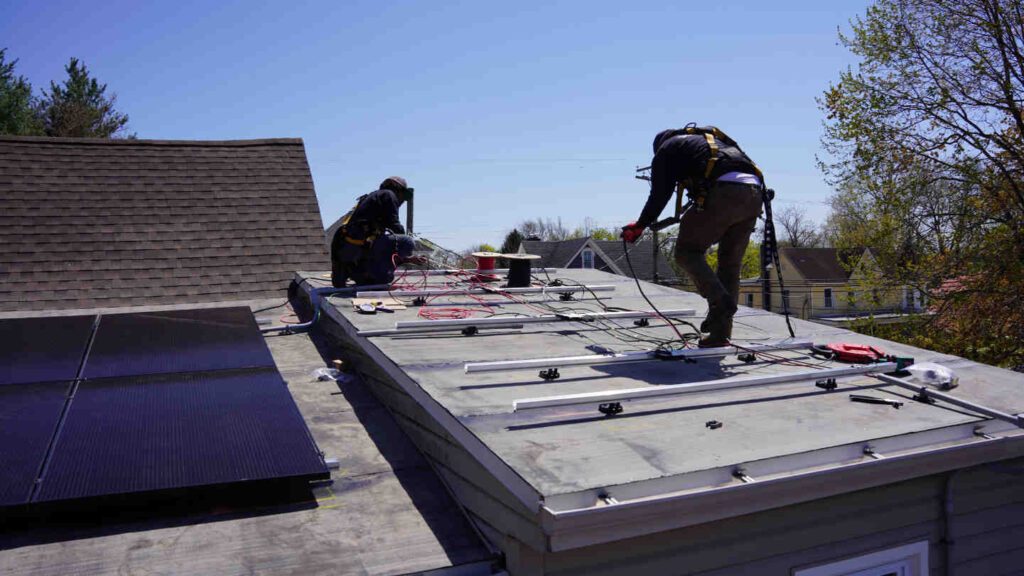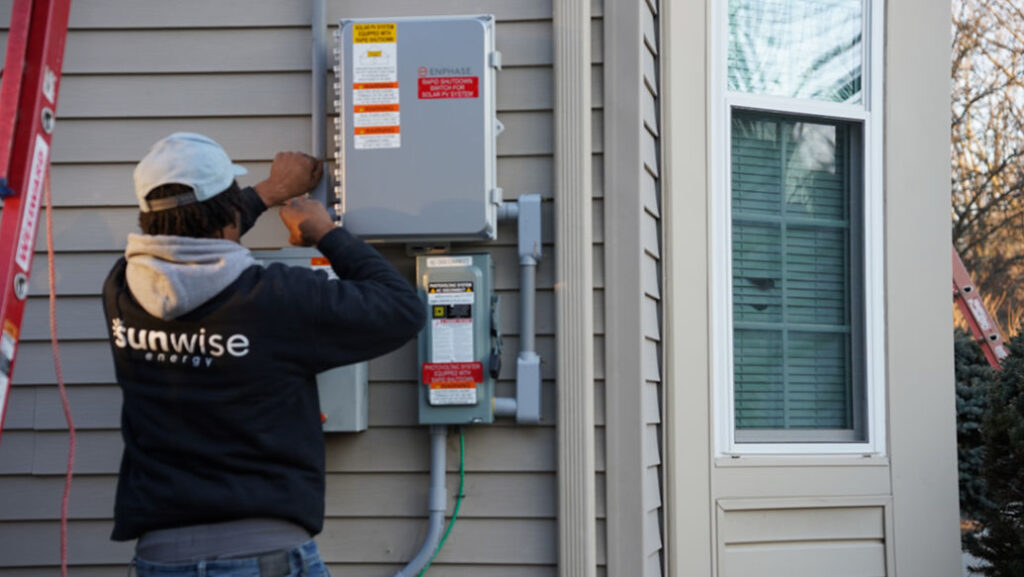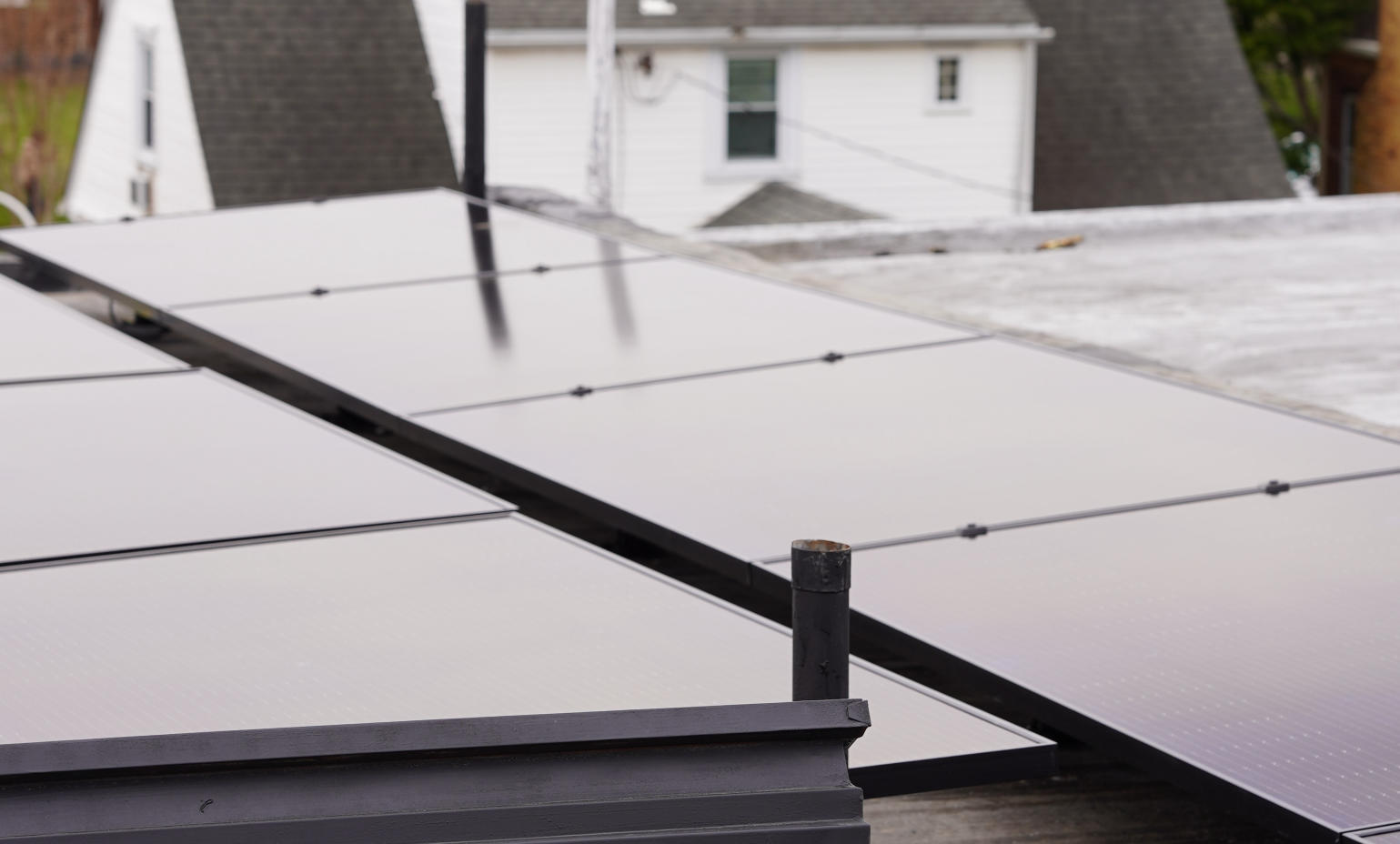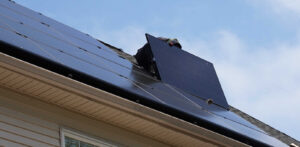Solar energy is surging across the United States, with homeowners and businesses adopting panels to reduce energy costs and promote sustainability. A common question arises: Can you put solar panels on a flat roof? The answer is a resounding yes. This article covers important things to know about solar on flat roofs, including whether you can install or mount solar panels on a flat roof, the benefits, challenges, and key considerations for U.S. residents.
Flat roofs are prevalent in commercial properties like warehouses and in residential designs such as urban condos or modern homes. Unlike sloped roofs, which naturally tilt toward the sun, flat roofs require specific setups to optimize solar potential. With the right system, they can generate power as effectively as pitched roofs. In 2025, solar adoption is soaring in states like California, Texas, and Florida, and flat roof systems are gaining popularity nationwide. The U.S. solar market has grown over 20% annually since 2020, fueled by declining costs and rising energy prices, making flat roof solar a practical choice for diverse buildings.

Can You Install or Mount Solar Panels on a Flat Roof?
Yes, you can install and mount solar panels on a flat roof, and the process is often simpler for installers compared to sloped roofs. Sloped roofs involve complex angles, while flat roofs offer a stable, accessible surface that supports both equipment and worker safety. However, flat roofs do not have a natural tilt, so mounting systems are needed to angle the panels between 10 and 30 degrees, depending on your latitude. The ideal angle varies by region. Lower tilts tend to work well in southern states with consistent sun, while steeper tilts are more effective in northern areas to capture winter light.
Mounting Options
In the U.S., two primary mounting systems dominate flat roof solar installations: ballast mounts and mechanically attached systems. Ballast mounts use weights, such as 100-pound concrete blocks, to secure panels without penetrating the roof, preventing leaks. This is ideal for flat roofs with waterproof membranes. Mechanically attached systems bolt frames to the roof for added stability in windy regions, with proper sealing to avoid water issues. Both systems position panels to face south for maximum sunlight. Emerging hybrid systems offer flexibility for unique roof layouts, catering to custom needs.
Structural and Spacing Needs
Before installation, a structural assessment is essential. Solar panels weigh about 40 pounds each, and with mounts, the total can reach up to 100 pounds per panel. Most modern flat roofs in the U.S. can handle this load, but older roofs, especially those built before the 1980s, may need reinforcement. Roofs must also be able to resist wind uplift, which is especially important in areas prone to storms. Panel spacing matters too. Gaps of 3 to 4 feet help prevent shading and maintain efficiency. On larger roofs, thoughtful layouts can increase the number of panels and improve overall energy production.
Things to Know About Solar on Flat Roofs
Benefits
Flat roof solar offers significant advantages. Unlike sloped roofs with fixed angles, flat roofs allow customizable tilt and orientation, enhancing efficiency year-round. Installation and maintenance are simpler, as flat surfaces eliminate the need for harnesses, reducing labor costs. Panels sit low, blending aesthetically and satisfying HOA requirements. Flat roofs also support larger arrays on expansive buildings, powering entire businesses or multi-family units with a single system.
Potential Drawbacks
Mounting systems add to the overall cost, and spacing requirements can reduce the number of panels that fit, especially on smaller roofs. Maintenance may also be more demanding. Flat panels can collect dust, leaves, or snow, which means regular cleaning is often necessary. This is particularly true in colder areas where snow can add extra weight. In regions with frequent storms, panels must be secured against wind or hail, which requires stronger designs. With careful planning, these issues can be addressed, and ongoing technological improvements continue to enhance durability.

Costs and Efficiency Considerations
Installation Costs
Flat roof solar installation costs can vary based on roof size, panel type, and location. In 2025, a 5 kW system typically averages around $10,000, with a range between $3,000 and $15,000 before incentives. A structural report may add $300 to $700, though labor is often more straightforward on flat surfaces. Premium panel models can increase overall costs, but federal tax credits and state rebates often offset 30–50% of the total. If you’re curious about the cost of installing solar panels at your home, you can get a free consultation with us.
Efficiency and Savings
Flat roof panels can outperform sloped ones due to adjustable tilts, which optimize sun capture. In sunny regions, bifacial panels increase output by 10-20% by harnessing reflected light, especially on white or metal roofs. While spacing may reduce panel count, efficiency compensates. Savings range from $800-$1,500 annually in sunny areas, less in cloudy regions, depending on local rates. With a 30% federal tax credit through 2032 and state incentives, payback periods are typically 8-12 years, often shorter as utility costs rise.
Preparing for Flat Roof Solar
Assessing Your Roof
Before installing solar panels, evaluate your roof’s condition. Ensure it can support the weight of panels and mounts, typically 15 to 20 pounds per square foot. Measure available space, accounting for gaps that help keep panels unshaded, and check for slight slopes that often exist on “flat” roofs. Identify obstacles like vents that may affect south-facing setups. Roof materials such as rubber or TPO work well with mounting systems. This assessment confirms whether your roof is ready and highlights any upgrades that might be needed. You can also schedule a free consultation with us to help assess your roof’s solar potential.
Permits
Local regulations differ across the U.S. While many places allow solar installations, certain areas like historic districts or neighborhoods with homeowners’ associations may have rules about panel height or appearance. For example, panels may need to stay within 18 inches of the roof surface. Sunwise Energy manages the permitting process from start to finish, including navigating these kinds of restrictions. Permit fees typically range from $50 to $500, and commercial sites may have added zoning requirements.
Why Choose Flat Roof Solar?
Versatility and Accessibility
Flat roof solar is highly versatile. Installers can adjust panel angles to suit any climate, unlike sloped roofs, making it ideal for diverse U.S. regions. Flat surfaces simplify installation and repairs, appealing to busy homeowners or businesses. This accessibility also supports retrofits, as flat roofs on older buildings can often accommodate solar with minimal modifications.
Future-Proofing Your Property
Solar reduces reliance on rising grid costs, helping you lock in savings as rates climb by 3 to 5 percent each year in many areas. It can also increase your property’s value. Homes in the U.S. with solar often sell faster and at a 4 percent premium, according to 2024 studies. Buyers drawn to energy efficiency find solar features appealing. Installing solar on a flat roof gives your property a modern edge and adds long-term value in a time when sustainability matters more than ever.
Environmental Impact of Flat Roof Solar
Cutting Carbon Emissions
Solar significantly lowers your carbon footprint. A 5 kW system offsets 7,000 lbs of CO2 annually, equivalent to planting 80 trees or avoiding 3,000 miles of gas-powered driving. It reduces reliance on fossil fuels, particularly in coal-heavy regions, improving air quality. Widespread adoption amplifies this impact, as millions of U.S. solar homes collectively reduce emissions.
Supporting Clean Energy Goals
Flat roof solar aligns with U.S. sustainability objectives, supporting federal targets for 50% renewable energy by 2030 and state net-zero pledges. Commercial flat roofs, in particular, can power entire facilities renewably, advancing a cleaner future.
Power Up with Sunwise Energy
Flat roof solar is a smart and efficient option for both homeowners and businesses. With the right mounting and setup, it performs just as well as sloped roof systems. The flexible panel placement, ease of access, and long-term savings make it a strong choice, even with the added costs of angled mounts and spacing considerations. Solar has become more accessible than ever, and Sunwise Energy can help you make the most of your flat roof. Schedule a free consultation to explore installation options, financing, and how to lower your energy bills while boosting your property’s value.










